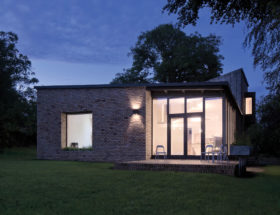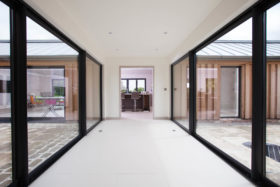

In self-build, cash flow is king. The process tends to involve trying to create the best house you can with the money available – and that usually means using all of it! More often than not, your entire project fund gets spent, and in some cases even more than that.
Aside from the Section 106 agreements that can kill a scheme before it’s even started, there’s also VAT-related cashflow to consider. While you can claim back the tax on fixed materials you’ve purchased at the end of a project, you have to pay it out first. It’s a stumbling block for some, and you may prefer to let your builder sort it out by buying all the materials on your behalf.
Another budget management problem has recently reared its ugly head. The government has announced that Stamp Duty Land Tax (SDLT) will be applied as a 3% levy over the due rate for those buying second homes. You can see their logic, and I can sympathise with the principle that if you can afford an extra home when others can’t even get a foot on the housing ladder then some additional tax contribution is fair.
However, at the National Custom & Self Build Association (NaCSBA) we’ve been discussing the implications and realised self and custom builders might be losing out through no fault of their own.
The reason? A growing number of us are sourcing plots by purchasing residential plots in the form of garden sites – or by buying an existing dwelling, knocking it down and replacing it. Either route will attract the additional 3% levy under the proposed amendment. Note that non-residential land (ie greenfield or brownfield sites) will only attract the standard rate of SDLT.
Under this new rule, self-builders still living in their current abode during the works, who intend to sell up later to release funding for constructing the new house, will be expected to pay the additional 3% fee. However, they can claim it back providing they sell their existing property and move into their new home within 18 months of buying the plot.
We calculate that on a site costing £150,000 this will equate to locking up £4,750. Unlike VAT, this can’t be offset through your builder. While a developer can factor this cash flow into the selling price, self-builders can’t, so end up having to pay up front and getting refunded later. The average VAT reclaim for one-off schemes (according to HMRC) is £13,240. Add the extra SDLT levy on top and that’s almost £18,000 that has to be allocated in advance.
The DCLG has conducted a review of the proposed reforms, and NaCSBA has made a submission asking either for an exemption from the 3% levy for self and custom builders or for all building land to be classed as non-residential. Without this, the additional tax threatens to be another burden that may deter people from beginning their own projects. All this when the government should be doing everything it can to remove the red tape and additional costs to encourage growth in the sector.


As this article is almost 1 year old, I am wondering if the “DCLG review of the proposed reforms, and NaCSBA submission asking either for an exemption from the 3% levy” has had any progress or success? As this new rule threatens to add another £6,500 onto the purchase price of the land I am looking at buying.
Hi there, we are currently living in our property and proposing to have a house built in the garden which we will move into. Will this attract stamp duty. There is no purchase of the land as we already own it.
Thank you
Judy